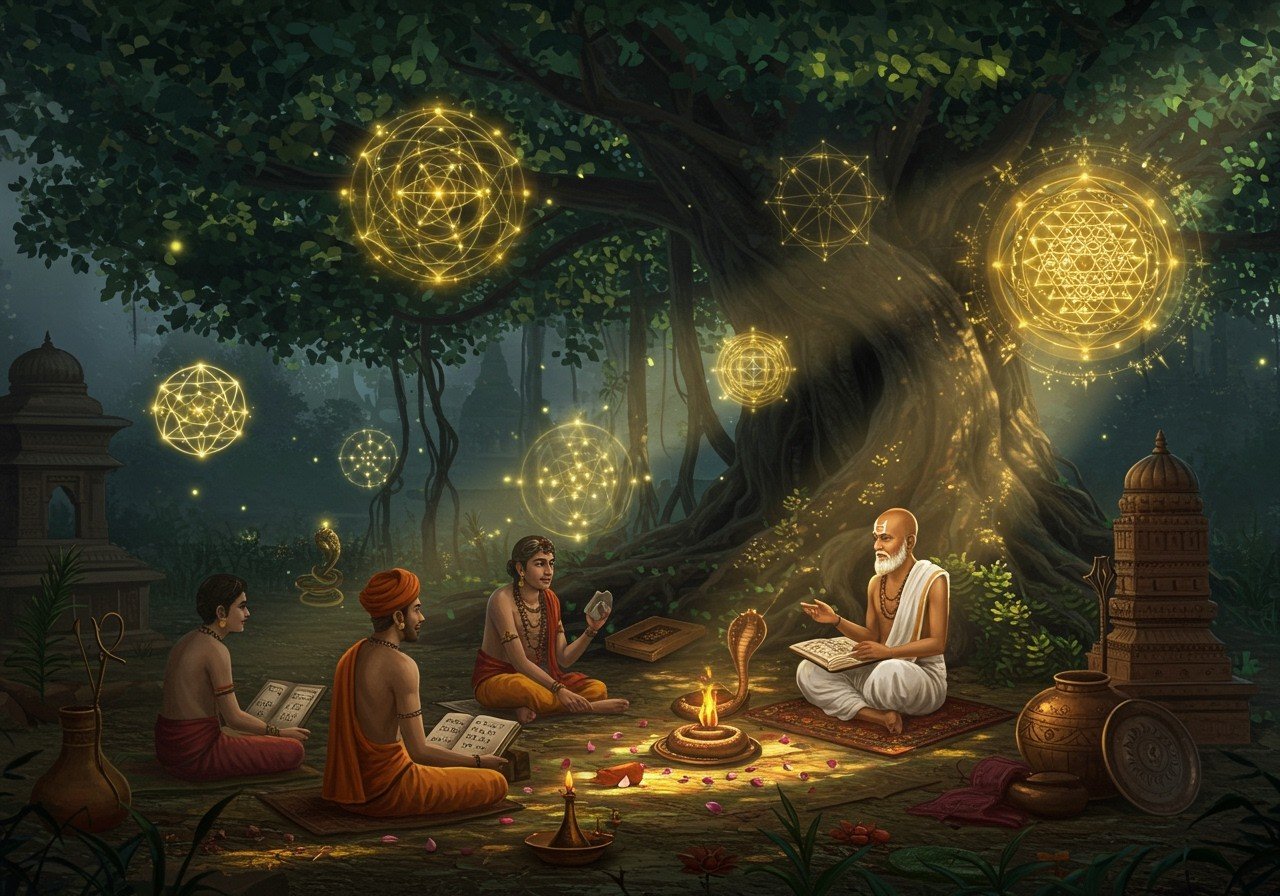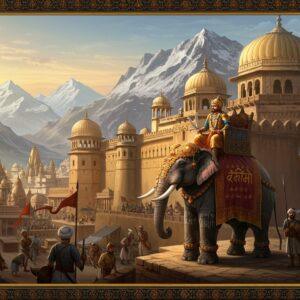
Delve into the rich tapestry of Indian mathematics, a profound legacy that has shaped global mathematical understanding. From ancient scholars to medieval thinkers, Indian mathematicians have laid the groundwork for numerous mathematical principles, reflecting a deep interconnection between spirituality and scientific inquiry.
Historical Foundations of Indian Mathematics
The journey of Indian mathematics begins in the Vedic period (c. 1500-500 BCE), interwoven with religious rituals and architectural design. Early texts like the Sulbasutras provided geometric principles for constructing altars, demonstrating the practical application of mathematical knowledge. The Classical Period (400-1200 CE) marked a golden age, with luminaries like Aryabhata and Brahmagupta introducing groundbreaking concepts such as zero and negative numbers. Jain mathematics further expanded the understanding of infinity and large numbers. This era showcases a vibrant mathematical tradition deeply rooted in cultural practices.
Uttaradi Math and Its Mathematical Heritage
Uttaradi Math, a prominent Dvaita Vedanta institution, holds a significant place in India’s mathematical heritage. This monastic center is renowned for preserving and promoting mathematical wisdom, fostering a unique blend of spiritual and scientific learning. Scholars from Uttaradi Math have made notable contributions to mathematical logic and philosophy. This integrated approach to education highlights the holistic nature of knowledge in Indian tradition.
You can find resources related to Vedic mathematics and spiritual practices on Poojn.in. We offer a curated selection of puja items, including Ganesh Murtis, to enhance your study and spiritual pursuits.
Shankaracharya and the Advaita Vedanta Perspective
Shankaracharya, a central figure in Advaita Vedanta, profoundly influenced Indian mathematical philosophy. His non-dualistic philosophy shaped the understanding of infinity and mathematical abstractions. The monastic orders established by Shankaracharya became important centers for disseminating mathematical knowledge, integrating spiritual insight with mathematical exploration.
Enhance your understanding of Advaita Vedanta and its connection to mathematics with resources available on Poojn.in. Explore our collection of spiritual books and puja items to deepen your practice.
Contributions of Different Monastic Orders
Various Hindu monastic orders, each with its unique philosophical perspective, have enriched India’s mathematical landscape. From Vaishnavism to Shaivism, these orders fostered distinct mathematical advancements, reflecting the interplay between spiritual beliefs and mathematical thought. These institutions served as vital hubs for preserving ancient texts and promoting intellectual growth, contributing to a diverse and vibrant mathematical tradition.
Influence on Global Mathematics
Indian mathematical innovations have left an indelible mark on global mathematics. The decimal system, algebra, and trigonometry, originating in India, traveled westward, influencing the Renaissance and shaping modern mathematical understanding. The dissemination of Indian texts to the Islamic world and Europe facilitated this cross-cultural exchange, highlighting the interconnectedness of mathematical knowledge.
Modern Relevance and Legacy
The legacy of Indian mathematics continues to resonate in modern education and research. Renewed interest in ancient texts has led to their inclusion in academic curricula. Technology and online platforms have made these historical treasures accessible to a wider audience. Preserving this heritage is vital for cultural identity and intellectual history, inspiring future generations with the wisdom of the past.
Poojn.in Supports Your Spiritual Journey
Poojn.in recognizes the profound connection between mathematics and spirituality. We offer a curated selection of puja items to support your practices:
- Ganesh Murti: Honor Lord Ganesha, the deity of knowledge and mathematics, with a murti for your study space or puja room. Available in various sizes and materials.
Find the perfect Ganesh Murti to inspire your mathematical pursuits on Poojn.in. - Brass Geometry Sets: Explore sacred geometry and yantra creation with traditional brass tools.
Discover authentic brass geometry sets on Poojn.in. - Copper Plates: Use copper plates for writing mathematical calculations and mantras, connecting your studies with spiritual practice.
Find high-quality copper plates for your rituals on Poojn.in. - Pure Cotton Mats: Create a sacred space for your mathematical studies and rituals with pure cotton mats.
Shop for comfortable and pure cotton mats on Poojn.in. - Diya and Lamp Sets: Illuminate your study sessions and mathematical rituals with diyas and lamps.
Browse our collection of diyas and lamp sets on Poojn.in.
Visit Poojn.in today to explore our complete collection and enhance your spiritual journey.
Embracing the Legacy
Indian mathematics stands as a testament to the fusion of spirituality, philosophy, and intellectual innovation. From the contributions of institutions like Uttaradi Math to the philosophical insights of Shankaracharya, this rich tradition continues to inspire. By embracing this remarkable heritage, we honor the wisdom of the past and its influence on contemporary mathematics. Preserving and sharing these traditions ensures that the legacy of Indian mathematics continues to enlighten future generations.
Exploring the Rich Tradition: FAQs
Where did Indian mathematics originate? Indian mathematics emerged from ancient texts like the Vedas (c. 1500 BCE), which contain early uses of numbers and arithmetic. The Indus Valley Civilization also shows evidence of a sophisticated understanding of mathematics, including the decimal system.
Which figures played key roles in Indian mathematics? Mathematicians like Aryabhata, Brahmagupta, Bhaskara II, and Madhava of Sangamagrama made substantial contributions, developing concepts like zero, the decimal system, algebra, trigonometry, and calculus. Learn more about the history and significance of Saraswati Puja, the goddess of knowledge, on Poojn.in.
How did Indian mathematics spread globally? Indian mathematical concepts traveled to the Islamic world and then to Europe, influencing the development of modern mathematics. This transmission of knowledge occurred through the translation and dissemination of Indian texts.
What was Uttaradi Math’s contribution? Uttaradi Math served as a center for preserving and teaching ancient Indian mathematical knowledge. Its scholars contributed to mathematical logic and philosophy, integrating spiritual and scientific learning. Explore traditional South Indian educational practices at Sringeri here.
How is Shankaracharya connected to Indian mathematics? Shankaracharya’s influence, though primarily philosophical, extended to mathematics through the monastic orders he established, which fostered education and scholarship. These institutions played a crucial role in preserving and transmitting mathematical knowledge. Discover more about Udupi Sri Krishna Matha and its historical significance on Poojn.in.
Which other monastic orders were involved in mathematics? Besides Uttaradi Math, institutions like Sringeri Sharada Peetham contributed to the preservation and teaching of Indian mathematics. These orders played an essential role in maintaining the continuity of mathematical knowledge across generations. Celebrate Saraswati Puja with authentic puja items from Poojn.in.
Why is Indian mathematics relevant today? The study of Indian mathematics provides insights into the historical development of mathematical concepts and highlights India’s intellectual contributions to global knowledge. It showcases a rich tradition that continues to inspire and inform mathematical research and education.
What are some key texts in Indian mathematics? Important texts include the “Aryabhatiya” by Aryabhata, the “Brahmasphutasiddhanta” by Brahmagupta, “Lilavati” by Bhaskara II, and the works of the Kerala School of Mathematics and Astronomy. You can find a Bengali version of the Srimad Bhagavad Gita on Poojn.in to further explore the philosophical connections to mathematics. Find pure Kalwa Raksha Sutra on Poojn.in for your spiritual practices.


